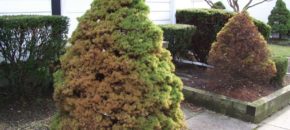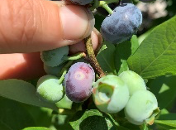In continued response to the Coronavirus (COVID-19) pandemic, small business owners – including agricultural businesses, in all U.S. states, Washington D.C., and territories are able to apply for an Economic Injury Disaster Loan advance of up to $10,000. This advance is designed to provide economic relief to businesses that are currently experiencing a temporary loss […]
Continue reading...Small Business Administration Continues to Accept New EIDL Applications on June 15th
Nursery update; focus on warm season spider mites

This advisory provides; (1) warm season spider mite biology and control options, (2) current growing degree-day information, and (3) a boxwood blight risk update. Note: Previous spider mite advisories Steve Rettke, Rutgers IPM, wrote two very good advisory posts pertaining to the different seasonal mites, in addition to symptomology and images of the different mites. […]
Continue reading...Fruit IPM for 6/17/20

Peach: Oriental Fruit Moth: We are between generations 1 and 2, with the first insecticide applications due in southern counties by the end of the week, and in northern counties by the end of the following week.
Continue reading...USDA Good Agricultural Practices, Harmonized and Harmonized Plus Audits
Wes Kline reports the New Jersey Department of Agriculture is now scheduling audits. There had been an extension for audits before May 31, but there will be no additional extensions. If you had an audit last year and need to schedule a renewal, or if you need a new audit, now is the time to […]
Continue reading...Tonight’s Webinar for Ag Employers – Updated Agenda
Understanding & Implementing NJ’s COVID-19 Guidance For Migrant & Seasonal Farmworkers, Employers & Housing Providers Tue June 16, 2020 7:30 PM – 9:30 PM All NJ agricultural employers are invited to learn directly from NJ Departments of Health, Labor and Agriculture who will discuss expectations for implementation of the “NJ COVID-19 Guidance for Migrant and […]
Continue reading...USDA Good Agricultural Practices, Harmonized and Harmonized Plus Audits
The New Jersey Department of Agriculture is now scheduling audits. If you have had an audit last year and need to schedule a renewal or if you need a new audit now is the time to schedule it. There had been an extension for audits before May 31, but there will be no additional extensions. […]
Continue reading...